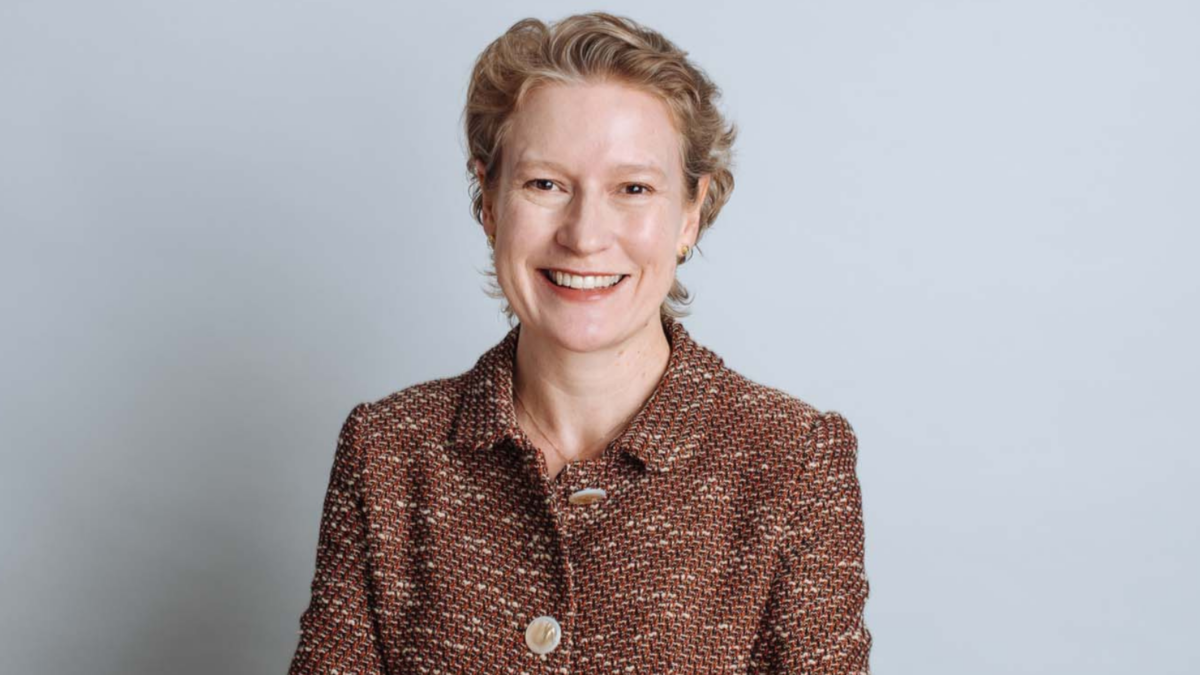What big super funds need to know about SMSFs
(Pictured: Andrea Slattery)
Comment by Greg Bright
SMSFs are much more skewed to small business ownership than previously thought. Their number will continue to rise for several years but their average balance will decline, indicating further disaggregation and diseconomies due to reduced scale. And they still hold way-too-much in cash and term deposits for their own good.
These are some of the new facts to emerge about the fastest-growing sector of the super fund market from the 10th annual conference held in Brisbane last week by SPAA (the Self-managed superannuation fund Professionals Association of Australia).
About 1400 attendees spent three days at the Brisbane Convention and Exhibition Centre. There was a self-congratulatory air, reminiscent of the early CMSF conferences in Wollongong in the 1990s. There were two other similarities with those CMSF events: the organisers were passionate about their beliefs and the sponsors and other commercial attendees were excited at the prospect of being involved in the next big thing in finance. A difference, however, was that SPAA treated its sponsors incredibly well – perhaps too much so – with TV-style commercials peppering plenary sessions and everyone with a microphone offering up seemingly endless gratitude. CMSF, of course, has always shown a healthy disrespect for the hands that feed it.
The endless gratitude at SPAA, bordering on obsequiousness, was not confined to the commercial interests. It extended fully to the politicians, especially from the Government, and public servants who accepted their invitations to speak. Each, in turn, rewarded SPAA with further congratulations on its efforts and expressions of support in recognition of the importance of the sector. Smiles all round.
But what does the SMSF phenomenon really mean? What does it mean for Australia’s retirement system and what does it mean for the other players in superannuation? What is the profile of SMSF trustees and when, if ever, will their number hit a ceiling?
Andrea Slattery, the founding chief executive of SPAA and a forceful advocate of the sector, told the conference that she expected the number of SMSF trustees, which is about twice the number of funds, will grow by a ‘factor of four’ within the next decade. That implies almost four million trustees and two million SMSFs, or nearly quadruple the current (2013 level) 531,000 funds. She said, later, that this was what the SMSF sector had the capacity to handle, implying that she may have been rethinking her conference-podium bullishness. Whatever the case, Slattery and the practitioners at the conference expect further strong growth in the number of funds.
There are various agencies which collect data on SMSFs, with varying degrees of timeliness, but, roughly, we know the sector accounts for more than $500 billion in assets and this is about 30 per cent of all super assets.
Slattery also told the conference that various research pieces, including the important one last year by Deloitte, which has been often quoted, predict the proportion of assets attributable to SMSFs will remain fairly constant. The proportion for industry, government and remaining corporate funds, however, is likely to tick up slightly to about 38-40 per cent over the next few years, largely at the expense of commercial funds. Or so the consensus view goes.
It may well be, though, as Senator Arthur Sinodinos, the assistant treasurer, reminded the conference, that every Australian ends up with an SMSF, which, he said, was what Jeremy Cooper, the regulator-turned fund manager, had suggested as a possibility.
“For everyone to have an SMSF is consistent with the aspirations of most Australians,” Sinodinos said at SPAA. It has to be said, Sinodinos is quite impressive as a speaker at superannuation events, which he regularly attends, except for the odd silly comment like that. Not only is there no way he has a clue about the aspirations of most Australians, it is unlikely that those aspirations have anything to do with superannuation. And it is highly unlikely that most Australians are sitting around dreaming of the day they can have their own SMSF.
As an aside, the SPAA attendees were also treated to an insight into how our public servants are rather more adaptive to changing political climates than they are supposed to be. Rob Heferen, an executive director, Revenue Group, at the Australian Treasury, said this: “It is important to recognize that we [Treasury] are advisors… The Treasurer and the Minister for Small Business are both passionate advocates of your sector… Treasury’s views have to change according to the broad philosophy of the Government…”
Really? That’s not what I was taught at Sydney University in the 1970s in the Political Economy stream of my Economics degree. I was taught about the “separation of powers” (Executive of Government, Parliament and Judiciary) and I have assumed for the past 40-odd years that the advice given to Government by Treasury was bipartisan. (I’m no longer proud of this but I actually worked for the then-Government, as the first-ever press secretary for the then-Treasurer, John Howard, in 1980-81, and I have a few insights of my own). Way to go Rob. Perhaps you, too, can do a Jeremy Cooper and become a better-paid funds manager in due course.
Back to the SMFS market and what it means for big funds: the profile of the average SMSF trustee is changing and it may be that what we thought was the average SMSF trustee is completely different.
For instance, because of the Super Stream legislation, we now know that there are at least 52,000 SMSF trustees who work for companies which have 20-or more employees. That’s not a lot. It’s the Australian Taxation Office’s current estimate, although according to some people at the SPAA conference, the ATO doesn’t have much of an idea and the number could be as high as 100,000. Whatever the actual number, it represents a low proportion of the number of SMSF trustees (more than 900,000). What this means is that the median SMSF trustee is likely to be a self-employed person. That, in turn, implies that there is a natural cap of about one million on the number of SMSFs.
More importantly, it raises questions about the type of person who is the average SMSF trustee and why it is that that person is so conservative and property centric in his/her investment mindset. It’s not just about that person’s money. It’s about taxpayers’ supporting old folk in their retirement. If the SMSF trustees, as a group, maintain a 40-50 per cent allocation to cash and term deposits, this will cost the country as a whole. If they also maintain their skew to residential property, with or without gearing, they will also be burdening us with additional risk. Why is it that the Government, past and present, doesn’t get this?
This is what we get from a vacuous Sinodinos instead, as told to the SPAA conference: “As Sir Anthony Mason [the 88-year-old SPAA patron who opened last week’s conference] said, we want a system driven by the desires of members and SPAA members are an important segment.”
The assistant treasurer, and other speakers, told the conference that the Financial System Inquiry, headed by former Commonwealth Bank chief David Murray, would be addressing the superannuation sector in a fashion which has not happened before. God help us.
I blame the industry fund movement, specifically AIST, for allowing this situation to eventuate. Tactically, AIST decided prior to the last election to lobby for an increase in the SG to 15 per cent and nothing else. I remember arguing with Fiona Reynolds, then AIST chief executive, on that very subject at the time. AIST should have gone in hard to limit the growth of SMSFs through, for instance, making a mandatory floor of $400,000-500,000 for SMSF ownership. Instead, we now have a flawed system which will cost taxpayers more over the long term. And balding politicians will continue to provide their “support” with our money.









